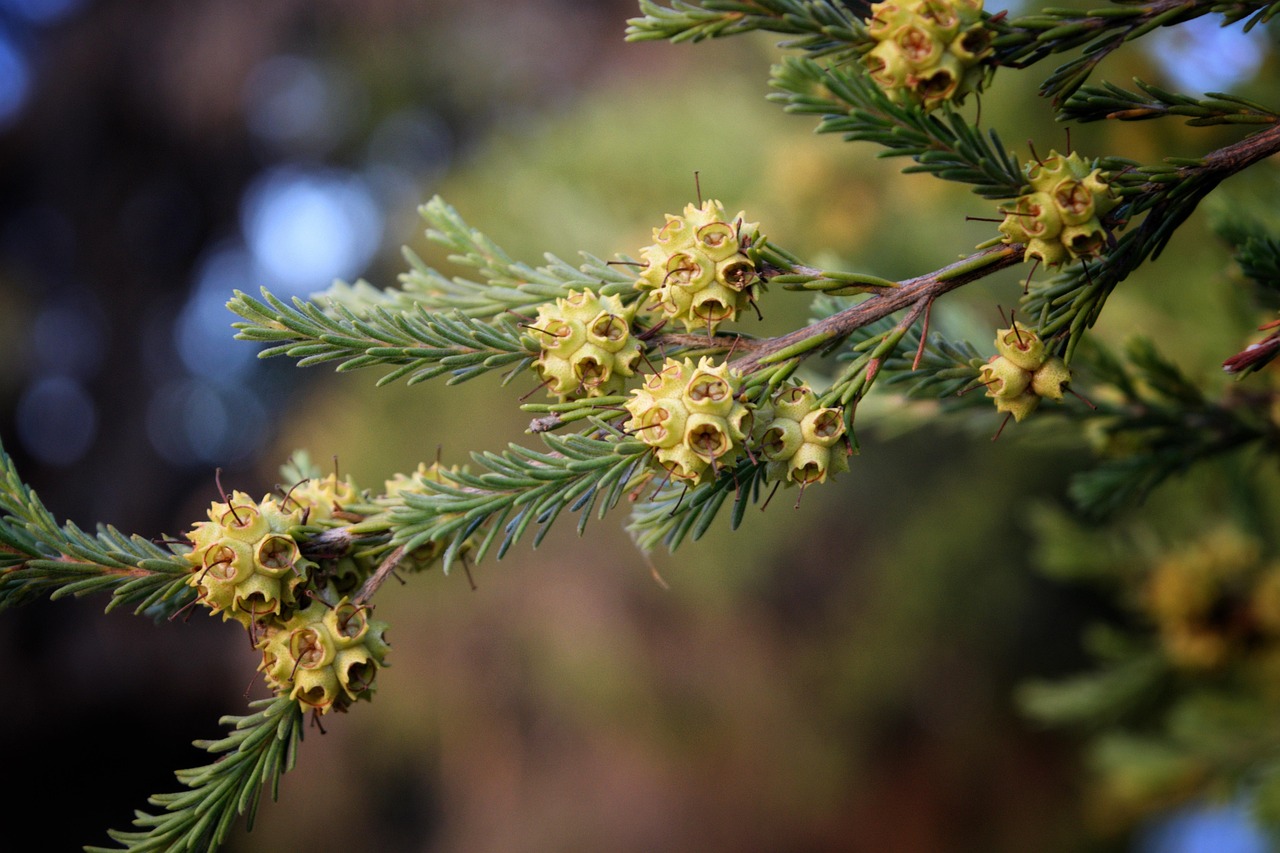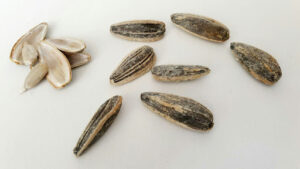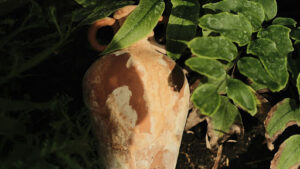How to Grow a Loquat Tree from Seeds at Home

Growing a loquat tree from seeds at home is something I wanted to try after seeing my neighbor’s tree spilling fruit over our garden wall. I’d never grown loquats before, so I decided to give it a go, using whatever tips I could find online and a bit of trial and error. The process isn’t complicated, but it does take some patience. The best part? You don’t need any fancy tools or years of gardening experience—just some fresh loquat seeds, dirt, and a bit of sunlight. Here’s how I went about learning how to grow a loquat tree from seeds, step by step.
Key Takeaways
- Always use fresh loquat seeds and avoid letting them dry out before planting.
- Pick a spot with plenty of sunlight and make sure your soil or potting mix drains well.
- Keep the seeds warm and moist to help them sprout, but don’t drown them.
- Transplant your seedlings once they’re about six inches tall and have a few leaves.
- Be patient—loquat trees grown from seed can take several years to produce fruit, but they’re worth the wait.
Select and Prepare Quality Loquat Seeds

Honestly, picking the right seeds makes a big difference right from the start. For the best shot at healthy loquat seedlings, I always use fresh seeds from fully ripe fruit. Overripe or shriveled seeds don’t germinate reliably, so I toss those out. Here’s my no-nonsense method:
- I find ripe loquats—rich yellow-orange, slightly soft to the touch—and cut them open to get at the seeds.
- I rinse the seeds under water, carefully rubbing off any fruit flesh.
- Right after cleaning, I dry them briefly with a towel, but I never let them dry out entirely.
- If I can’t plant them right away, I wrap them in a moist paper towel and keep them in a container or bag to maintain moisture.
The table below gives a quick comparison of seed viability depending on freshness:
| Seed Condition | Germination Rate |
| Fresh from ripe fruit | High |
| 1-2 days old, moist. | Good |
| Dried out | Low |
In my experience, planting the seeds as soon as possible gives the best results. The longer I wait, the fewer sprout. That’s why I try to plan my seed-collecting and planting as a same-day project when I can.
Just something to keep in mind—loquats grown from seeds may not bear fruit identical to the parent, but they’re just as rewarding to grow. If you’re curious about further steps from seed to fruit, this loquat seed growing guide straightforwardly covers the basics.
Deciding When and Where to Plant
Choosing the best moment and place to sow your loquat seeds really sets the tone for how they’ll grow in the months ahead. For loquats, timing is everything—it’s best to plant after the last frost, when the soil has warmed up. In my experience, below is what you need to keep in mind:
- Aim for springtime planting, with soil at or above 60°F (15°C) (soil temperatures are mild).
- Indoor germination can work, but placing containers by a sunny window is important, especially if you’re in a region where nights stay chilly deep into spring.
- Consistent warmth is more important than the exact date—if your area gets unpredictable cold snaps, wait an extra week or two.
| Planting Factor | Recommendation |
| Best Planting Season | Spring, after the last frost |
| Soil Temperature | 60°F (15°C) or warmer |
| Sunlight Needs | 6+ hours, bright spot |
| Drainage | Well-draining soil |
I always notice that loquats like a nice, sunny spot—either on a warm patio or a south-facing window indoors. Picking the sunniest, least drafty place gives those seeds the best start.
Choose the Right Growing Medium and Containers
When I start loquat seeds, I always spend a moment thinking about the container and the kind of soil mix I’m using. Good drainage is probably the single most important factor when choosing both. Loquat seeds like a moist but airy environment to sprout and do not tolerate soggy roots.
Here’s how I set things up:
- I pick seedling trays or small pots, around 4–6 inches deep. They should have holes at the bottom to let excess water out.
- For soil, I use a mix of coconut coir and perlite or vermiculite, about a 1:1 ratio. If I want to go old-school, a quality potting soil with a bit of compost will also do the trick. I avoid heavy garden soil, since that gets compacted and might smother the seeds.
- I always add a thin layer of gravel or small stones at the bottom of my containers for even better drainage.
If you like to see things side by side, here’s a quick table comparing two good seed-starting mixes I use:
| Mix Type | Key Ingredients | Notes |
| Soilless Mix | Coconut coir, perlite | Fast draining, light, easy for roots |
| Traditional Mix | Potting soil, compost | Adds nutrition, holds moisture |
If your pots happen to be shallow or the soil gets crusty and water pools up, that’s a sign your setup needs tweaking—either more drainage or a lighter mix. It’s way better to start right than try to rescue soggy seeds.
Getting the container and medium right at the start makes the rest of the process a lot less frustrating. I always remember: happy roots make for happy loquat trees.
Provide Optimal Germination Conditions
Getting your loquat seeds to sprout isn’t hard, but it does take a little attention to the setup. Good germination starts with the right environment, not just tossing seeds in dirt and hoping for the best. Here’s how I make sure the seeds have a solid shot at coming up strong:
- Medium Matters: I use a mix of coconut coir and vermiculite (50/50), with a pinch of bone meal mixed in. This keeps things loose and not soggy.
- Planting Depth: I push each seed about an inch into the mix and gently cover. If you go too deep, they might rot; too shallow, and they can dry out.
- Humidity and Moisture: The trick is to keep the medium damp but not dripping. I’ve found a spray bottle works best—it soaks without turning things to mush.
- Heat and Light: Loquat seeds like warmth, so I put the containers by a bright window where temperatures stay near 70°F (21°C). They don’t want to be in the dark, but direct hot sun is too much at this stage.
Here’s a quick look at the conditions I aim for:
| Factor | Target |
| Temperature | ~70°F (21°C) |
| Medium Layout | 1 inch deep |
| Light | Bright, indirect |
| Moisture | Damp, not wet |
I’ve noticed that patience is key—sometimes seeds pop up in a few weeks, other times they bide their time. Resist the urge to poke around or dig them up, since that can mess up the process or damage the roots.
If you set things up just right early on, you’re more likely to have sturdy seedlings down the line. It’s all about consistency, checking for moisture every couple of days, and letting nature do its thing.
Caring for Seedlings During Early Growth
When my loquat seeds finally push through the surface, I know this is where things get interesting. The early growth stage is a bit tense—seedlings are still fragile, and I try not to fuss too much, but the right care can make a world of difference. Consistent, not soggy, moisture is absolutely key. Every morning, I check the soil with my finger. If it feels dry just below the surface, it’s time for a gentle watering. Too much water, though, and I risk rot.
Maintaining healthy seedlings involves a few habits I always stick to:
- Place containers somewhere warm and bright, but out of the path of intense noon sun. A window ledge works well, as long as it’s not drafty.
- Water carefully—never let the soil dry out completely. Seedlings are thirsty, but sitting in drenched soil is a fast way to lose them.
- After the first week or so, add a diluted, balanced liquid fertilizer, like a gentle plant feed made for fruit trees, to help with early root and leaf development.
Here’s what I aim for, in terms of my seedling care routine:
| Aspect | Ideal Practice |
| Light | 6-8 hours of indirect sunlight |
| Water | Keep soil moist, not wet |
| Fertilizer | Half-strength every 2 weeks |
| Temp. | 65–75°F (18–24°C) |
These early days always feel slow, but I remind myself that healthy seedlings now set the stage for strong trees later.
Finally, I keep an eye out for yellowing leaves or too-leggy stems—signs I should back off the watering or find a sunnier spot. If all goes well, the seedlings will slowly build up sturdy little trunks, ready for bigger pots or even the garden outside.
Transplanting Seedlings into Larger Pots or Outdoors
When my loquat seedlings reached about 6 inches in height, I knew it was time to move them into bigger pots or finally introduce them to the garden. Transplanting is an important step that gives roots more space to develop and keeps growth steady. Here’s how I usually handle it:
- Water the seedling thoroughly a few hours before transplanting so the root ball stays intact.
- Gently tip out the plant, taking care not to break the young root system.
- Prepare a new pot or a garden spot by loosening the soil and adding manure or compost for a nutrient boost.
- Place the seedling at the same depth it was growing before — too deep can cause stem rot.
- Lightly pack soil around the roots and water it in.
For outdoor planting, I check overnight temperatures. Loquats are not fans of frost, so I wait until things settle above 50°F at night. If I’m keeping a tree in a container, I make sure my pot is at least 2 gallons in size with good drainage holes.
Here’s a quick comparison I made between pots and in-ground planting:
| Feature | Larger Pots | In-Ground |
| Root space | Limited, needs upgrading | Expands as the tree grows |
| Movement | Portable | Stays in place |
| Watering frequency | More frequent | Less frequent |
| Soil control | Easy to adjust | Dependent on location |
If a seedling looks weak after moving, I sometimes shelter it for a few days—morning sun only—before I let it handle full exposure. The first couple of weeks after transplanting, I watch closely for drooping or yellow leaves. That’s usually just mild stress, and with regular watering, most bounce back quickly.
Long-Term Care: Watering, Feeding, and Sun Exposure

Once my loquat tree found its footing, the biggest surprise was how much steady attention it needs, especially when it comes to water, food, and sunlight. If I neglect any one of these, the tree lets me know quickly—it tends to sulk with droopy leaves or pale growth.
Watering
- I water deeply about once or twice a week, depending on how hot and dry it gets. Loquats don’t love soggy roots, so the soil should stay moist, never waterlogged.
- During rainy spells, I lie off so I don’t drown.
- In the hottest months, sometimes the tree is thirsty even sooner—it’s best to stick a finger in the dirt to check for moisture.
Feeding
- Three times a year, I sprinkle a balanced, granular fertilizer around the dripline—spring, summer, and early fall.
- No fancy stuff: just something with equal parts nitrogen, phosphorus, and potassium.
- Avoid anything with weed killer mixed in. That can harm your tree.
| Fertilizer Schedule | Application Time | Amount (per young tree) |
| 1st Feeding | Early Spring | 1/4 cup |
| 2nd Feeding | Midsummer | 1/4 cup |
| 3rd Feeding | Early Fall | 1/4 cup |
Sun Exposure
- Loquats can’t thrive in shade. They want 6–8 hours of sunlight daily.
- I place my potted tree on the south or west side of the patio. If it’s in the ground, I just picked the sunniest spot near a fence for wind protection.
Over time, I’ve learned that loquat trees bounce back well from minor mistakes, but if I stick to this watering, feeding, and sunlight routine, it’s tough to go wrong. The consistency is what pays off in growth and, eventually, fruit.
Patience, Fruiting Timeline & Pot vs In-Ground Growth

Growing a loquat tree from seed tries your patience, and it’s not for the impatient. From my experience, it often takes 6 to 8 years for a seed-grown loquat to finally produce fruit—sometimes even longer. This isn’t exactly quick, but watching the tree mature and knowing you started it from scratch feels satisfying.
Here’s how the fruiting timeline usually looks:
| Stage | Time from Planting |
| Germination | 1–2 months |
| Seedling establishment | Up to 1 year |
| Young tree growth | 2–5 years |
| First fruiting possible | 6–8 years (rarely up to 10) |
Now, deciding whether to keep your tree in a pot or move it into the ground is another thing I wrestled with. Honestly, both have strong points:
- Pots: Great for small spaces and if you get cold winters. Just be sure to pick a container that’s at least 18–24 inches wide and deep, and has good drainage. Loquats in pots might not grow quite as big, but they’re easier to move if there’s frost (loquat trees can thrive in pots).
- In-ground: If you’ve got the space and a mild climate, planting in the ground helps your loquat reach full size—and you might get more fruit, though it will still be years before that happens.
- No matter where, make sure the tree gets a solid 6–8 hours of sunlight daily so it has the energy to grow and eventually fruit.
Loquat trees test your patience, but with steady care, the day you see that first cluster of sweet fruit will make the wait worth it. Whether in a big pot on your patio or dug right into the yard, growing a loquat from seed is slow going, but it’s a project I ended up proud of.
Waiting for your fruit tree to produce can test your patience, but knowing when to expect fruit and whether to plant in a pot or straight in the ground makes things easier. The time it takes for fruiting depends on the tree and where you plant it. For tips on growing fruit trees and to get answers to all your tree care questions,check out our website today!
Frequently Asked Questions
How long does it take for a loquat tree grown from seed to produce fruit?
From my experience, a loquat tree grown from seed usually takes about 6 to 8 years to start making fruit. Sometimes, it can take up to 10 years. If you want fruit sooner, you might need to look into grafting.
Can I plant loquat seeds straight from the fruit, or do I need to dry them first?
I recommend planting loquat seeds as soon as you take them out of the fruit. Letting them dry out can stop them from sprouting. If you need to wait a day or two, keep the seeds wrapped in a damp paper towel.
Do loquat trees grow well in pots or containers?
Yes, I have found that loquat trees can grow in containers, especially when you don’t have much space. Just make sure the pot is big and has good drainage. As the tree grows, you might need to move it to a bigger pot.
What kind of soil is best for loquat seeds and trees?
Loquat trees are not too picky about soil, but I get the best results with soil that drains well. A mix with coconut coir, vermiculite, or perlite works great for starting seeds. For older trees, loamy soil with compost is ideal.
How much sunlight does a loquat tree need?
In my garden, loquat trees do best with at least 6 to 8 hours of direct sunlight every day. They can handle some shade, but more sun helps them grow strong and make more fruit.
Is it safe to eat loquats and their seeds?
It is safe to eat loquat fruit, and they taste sweet and a little tangy. But I never eat the seeds or leaves because they have small amounts of toxins. Always eat only the flesh of the fruit.



